
Imagine the scent of pine trees mingling with crisp mountain air, the sound of a distant river cutting through endless silence, and the feeling of soil beneath your feet as you step onto a piece of land that could be yours.
In a world where the hustle of daily life often drowns out our deepest desires, a growing number of places offer you the chance to carve out a new existence—free land, endless possibilities.
Now, more than ever, the allure of starting fresh is calling. In this journey, we’ll explore how to build not just a home, but a life that transforms.
1. Canada: The Great Northern Frontier

Canada—a land of vast wilderness, diverse cultures, and awe-inspiring landscapes. From the towering peaks of the Rocky Mountains to the endless stretches of forest and tundra, Canada is not just a country; it’s a dream for those seeking freedom and an extraordinary lifestyle. Free land initiatives in Canada are particularly enticing in less populated regions like the Yukon and Northern Ontario, where newcomers can build their dream life away from the bustle of city living.
A moment that sticks with me from my time in Canada: watching the northern lights dance across a clear winter sky, while standing on a piece of land that could one day be home. It’s the kind of place where you can carve out your own existence, be it in the mountains or beside a peaceful lake. The wilderness is your neighbor, and the only sounds you hear at night are the crackling of a fire and the whisper of wind through the trees.
Key Practical Information:
- Peak/Off-peak seasons: Winter (Dec–Feb) for snow activities and the northern lights; summer (Jun–Aug) for hiking and outdoor adventures.
- Best ways to reach and explore: Fly into Vancouver or Toronto, then travel by car or local transport. Renting a vehicle is essential for exploring remote areas.
- Ideal duration of visit: At least two weeks to immerse yourself in nature and explore several regions.
- Must-try local experiences: Canoeing on a serene lake, dog sledding, hiking in national parks, experiencing a Powwow festival.
- Budget considerations: Accommodation and food are affordable, but remote land can have additional transportation costs. Budget for outdoor gear.
- Cultural etiquette tips: Canadians value politeness, patience, and respect for nature. Always greet with a smile and be punctual.
- Photography opportunities: Wildlife in national parks, the northern lights, and stunning vistas like Banff or Jasper.
2. United States (Alaska): The Last Frontier

Alaska, often referred to as the “Last Frontier,” is a place where the land is as untamed as the spirit of the people who call it home. Alaska’s vastness is humbling. From the icy shores of the Arctic Ocean to the sweeping wilderness of the Kenai Peninsula, the state’s offer of free land attracts those with a pioneering spirit. It’s the ideal place for anyone looking to escape the clutches of civilization and start anew, surrounded by rugged terrain and endless opportunities. Imagine waking up to snow-capped mountains and glaciers or fishing in pristine waters that seem untouched by time.
A memorable moment from my visit: Standing on a glacier at sunrise, the landscape bathed in soft pink light, the silence broken only by the sound of distant cracking ice. Alaska demands respect. It’s not for everyone, but for those who are willing to embrace its challenges, the rewards are unmatched. The Alaska Homestead Act offers a real opportunity to settle on land and live off the grid, creating a life that revolves around nature, not technology.
Key Practical Information:
- Peak/Off-peak seasons: Summer (Jun–Aug) for the best weather and daylight hours; winter (Dec–Feb) for winter sports and Northern Lights viewing.
- Best ways to reach and explore: Fly into Anchorage or Juneau and rent a 4×4 vehicle for exploring remote areas. Boat travel can also be an option in coastal regions.
- Ideal duration of visit: 10 days to two weeks to get a feel for the land, but longer stays are necessary if planning to settle.
- Must-try local experiences: Dog sledding, whale watching, fishing in remote rivers, and exploring Denali National Park.
- Budget considerations: Costs are higher due to remote location, especially for lodging, but outdoor activities like hiking and fishing are inexpensive.
- Cultural etiquette tips: Respect the land and the indigenous peoples. Always follow park regulations and be mindful of wildlife.
- Photography opportunities: Snow-capped peaks, glaciers, whales, and the Northern Lights are all must-capture moments.
3. New Zealand: The Land of the Long White Cloud
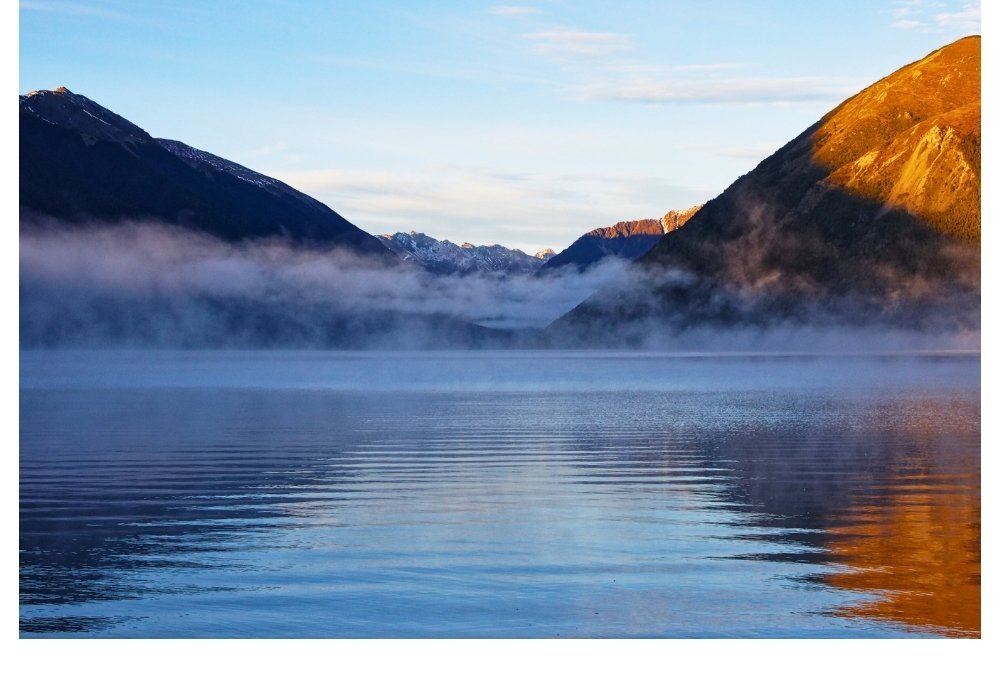
New Zealand, with its lush greenery, towering mountains, and world-renowned coastlines, feels like a dream world. It’s one of those places where nature unfolds in every direction, and no two views are ever the same. New Zealand’s free land programs are especially appealing for those seeking a fresh start. Whether you’re drawn to the rugged beauty of South Island or the more temperate climes of North Island, New Zealand offers an ideal balance between adventure and tranquility. Picture yourself building a home surrounded by breathtaking views, from rolling hills to serene beaches, with the sound of waves crashing in the background.
One of the most magical memories I have from New Zealand was walking through the glowworm caves on the North Island—feeling like I was walking through a fairy tale. It’s this blend of natural wonder and the opportunity for a simple, sustainable lifestyle that makes New Zealand truly special. The land is fertile, and the country’s agricultural history provides the perfect environment for homesteading. If you’re someone who appreciates both natural beauty and cultural richness, this is the place to be.
Key Practical Information:
- Peak/Off-peak seasons: Summer (Dec–Feb) for beach days and hiking; winter (Jun–Aug) for skiing and snow sports.
- Best ways to reach and explore: Fly into Auckland or Wellington, then travel by car or campervan for the ultimate Kiwi road trip experience.
- Ideal duration of visit: Two weeks to explore the diverse landscapes, from the beaches to the mountains.
- Must-try local experiences: Bungee jumping, hiking through Tongariro National Park, and tasting Manuka honey.
- Budget considerations: Accommodation can be pricey, but outdoor activities like hiking are mostly free. Renting a campervan is a great option to save on lodging.
- Cultural etiquette tips: Kiwis are famously friendly but always respect Maori culture and traditions, especially in rural areas.
- Photography opportunities: Glacial lakes, volcanoes, glowworm caves, and spectacular coastal cliffs.
4. Argentina: Escape to the South

Argentina offers an enticing mix of rich culture, endless natural beauty, and a relatively low cost of living, making it an excellent choice for those seeking free land. In remote regions like Patagonia and Misiones, Argentina’s homesteading opportunities are rooted in the country’s tradition of rural living. Imagine sprawling, empty plains stretching all the way to the horizon, with snow-capped mountains standing guard in the distance. Whether you’re building your life in a remote village or on a wind-swept hill, Argentina offers a variety of settings for newcomers looking to put down roots.
A personal highlight from Argentina: Exploring the vast Patagonian steppe, where I stumbled upon a small family-run farm tucked away in the hills. They lived in harmony with the land, relying on farming and sheep herding for survival. Their way of life was simple but fulfilling, and the connection they had with their land was evident in every word they spoke. If you’re willing to embrace the challenges of rural living, Argentina offers a life that feels both rewarding and adventurous.
Key Practical Information:
- Peak/Off-peak seasons: Summer (Dec–Feb) for outdoor activities; winter (Jun–Aug) for exploring glaciers and ski resorts.
- Best ways to reach and explore: Fly into Buenos Aires or Mendoza, then travel by bus or car to rural regions. Roads in Patagonia can be long and isolated.
- Ideal duration of visit: At least two weeks to experience both city and rural life.
- Must-try local experiences: Argentine BBQ (asado), hiking in Patagonia, wine tasting in Mendoza, and learning about gaucho culture.
- Budget considerations: Relatively low cost of living, though remote locations can increase travel expenses.
- Cultural etiquette tips: Argentinians are warm and social. Always greet with a kiss on the cheek and be mindful of meal times—dinner starts late.
- Photography opportunities: Patagonia’s glaciers, Iguazu Falls, the Andes mountains, and rustic rural landscapes.
5. Chile: The Edge of the World
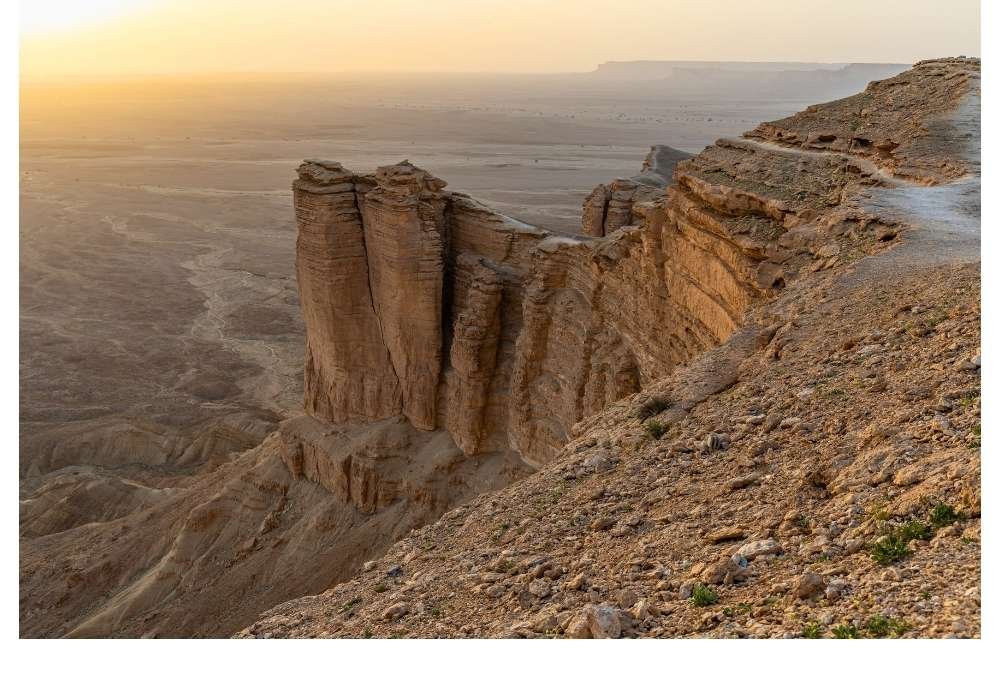
Chile is often called the “edge of the world,” and for good reason. Stretching from the deserts of the north to the glaciers of the south, Chile is a land of extremes, and its free land opportunities attract those seeking solitude, beauty, and a change of pace. In Atacama Desert, you’ll find a landscape of alien beauty, with endless dunes and salt flats. Meanwhile, in Southern Chile, lush forests and lakes define the scenery. It’s an exhilarating country to explore, with diverse regions offering very different experiences for anyone considering a new start.
My most vivid memory from Chile is watching the sun set over the Patagonian fjords, the colors of the sky and water blending in a spectacular array. The chance to stake a claim in such a place is a once-in-a-lifetime opportunity. Whether you dream of living on a quiet island or in a secluded valley, Chile’s land offers the perfect canvas to build the life you’ve always imagined. With a relatively stable economy and welcoming people, it’s an increasingly popular destination for settlers.
Key Practical Information:
- Peak/Off-peak seasons: Summer (Dec–Feb) for hiking and beach visits; winter (Jun–Aug) for ski resorts.
- Best ways to reach and explore: Fly into Santiago, then take a domestic flight or drive to rural regions. A 4×4 vehicle is recommended for remote areas.
- Ideal duration of visit: Two weeks to experience Chile’s diverse landscapes.
- Must-try local experiences: Chilean wine tasting, hiking in Torres del Paine, and sampling empanadas and curanto.
- Budget considerations: Accommodation is relatively affordable; however, traveling to remote regions may incur higher costs.
- Cultural etiquette tips: Chileans value respect and formality in greetings. Punctuality is important, especially in business settings.
- Photography opportunities: Easter Island, Torres del Paine, Atacama Desert, and picturesque coastal towns.
6. Finland: The Land of Midnight Sun
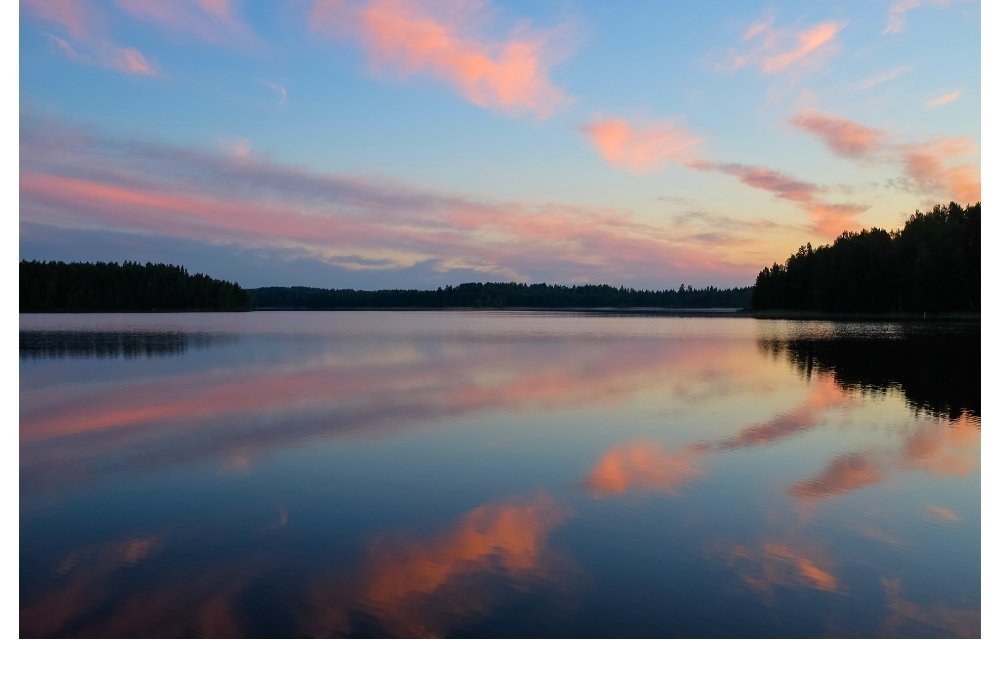
Finland, often overlooked in the rush to explore more well-known destinations, is a serene paradise for those wanting to build a life in harmony with nature. Picture this: You step onto your piece of land in the Finnish Lapland, surrounded by dense forests, crystal-clear lakes, and the immense silence of the North. This is a place where solitude is both a gift and a necessity, and living here is a meditative experience. Finland’s long winters and endless daylight in summer create an atmosphere of reflection and connection to the land, which few places on Earth can match.
One of the things that makes Finland truly special is the sauna culture, a deep-rooted tradition that brings together locals in a peaceful, communal space. Imagine unwinding after a day of chopping wood or fishing in a sauna that overlooks a frozen lake in winter. This is not just about physical cleansing, but a ritual of spiritual renewal. Finland offers a place to rediscover what really matters in life, stripped of the distractions of modernity. The land is yours to cultivate in an environment that’s as beautiful as it is rugged.
Key Practical Information:
- Peak/Off-peak seasons: Winter (Dec–Feb) for snow-covered landscapes and Northern Lights; summer (Jun–Aug) for enjoying lakes and hiking.
- How to get there: Fly into Helsinki and take a domestic flight or train to more rural areas. Finland’s well-maintained roads make car rentals ideal.
- When to go: For a truly unique experience, visit during midsummer when the sun never sets, or during winter to experience the magic of snow and ice.
- Budget considerations: Finland is on the pricier side in terms of accommodation, but land and activities are affordable, especially in the north.
- Etiquette tip: Finns value privacy, so avoid being overly chatty. Always respect nature, as the connection to it is sacred here.
- Great photo opportunities: Snow-covered forests, midnight sun landscapes, and serene lakes surrounded by rugged mountains.
7. Estonia: A Land of Enchanting Wilderness

Estonia, a hidden gem on the edge of Europe, is an extraordinary place for anyone looking to carve out a life on their own terms. With its dense forests, peaceful islands, and deep-rooted history, Estonia provides an off-the-beaten-path escape. The country’s rural areas, particularly on the island of Hiiumaa or the forests surrounding Tartu, offer a rare combination of seclusion and modernity. Here, newcomers can build their homes, embracing both digital freedom and timeless nature. While cities like Tallinn are rich with medieval charm, the countryside is quiet, serene, and ready for reinvention.
What makes Estonia stand out is its forward-thinking mentality—with many rural areas receiving high-speed internet and modern amenities, it’s an ideal location for those seeking to balance work with a peaceful lifestyle. The fresh air, clear lakes, and untouched landscapes make it a perfect setting for those looking to reconnect with nature and escape the chaos of urban life. Imagine living in a wooden cabin by a lake, where each morning you are greeted by the peaceful sound of birdsong and the rustling of trees. Estonia is the place where you can live simply but with all the benefits of modern technology.
Key Practical Information:
- Best time to visit: Summer (May–Aug) for its vibrant natural beauty; winter (Dec–Feb) for snow-covered landscapes and cozy settings.
- Reaching and exploring: Fly into Tallinn, then take a bus or drive to rural regions. Estonia is easy to navigate by car, and public transport is reliable.
- Duration of visit: At least a week to explore Tallinn, then venture into rural areas for the full experience.
- Must-try local experiences: Visit traditional wooden saunas, kayaking on clear lakes, and tasting Estonian honey and rye bread.
- Budget considerations: Estonia offers good value for money, especially in rural areas, though accommodation in Tallinn can be expensive.
- Cultural tip: Respect for personal space is important. Estonians appreciate quiet and privacy, so be mindful of their nature.
- Photography opportunities: Ancient castles, peaceful lakes, and charming rural landscapes, as well as the stunning old town of Tallinn.
8. Brazil: From Rainforests to Beaches
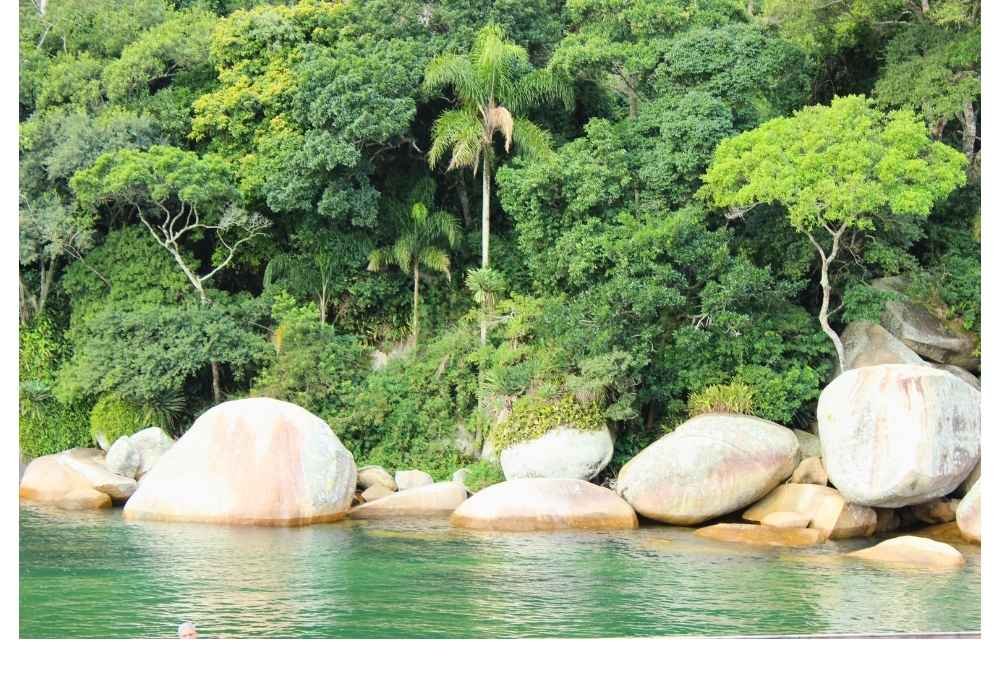
Brazil’s immense diversity makes it an intriguing option for those looking to build their future in a place that offers constant change and stunning landscapes. From the Amazon Rainforest in the north to the golden beaches of Santa Catarina, Brazil is a country of contrasts. For those seeking free land, the southern region offers vast opportunities in rural areas, where life is centered around agriculture and sustainability. The mountainous regions are dotted with picturesque villages, where newcomers can not only build a house but also a life steeped in the rhythms of nature and local culture.
One of Brazil’s most striking features is the connection between people and nature. The lifestyle here often revolves around self-sufficiency and living in harmony with the land. Imagine setting up your homestead near the Amazon, learning from local indigenous groups about the forest, or cultivating your own crops along the coast in a small seaside village. The spirit of Brazil is infectious, and while the country faces challenges, it is also a place that welcomes the bold with open arms.
Key Practical Information:
- Best time to visit: Dry season (Jun–Nov) for exploring rural regions; the rainy season (Dec–May) is ideal for those looking to experience lush, vibrant landscapes.
- Reaching and exploring: Fly into São Paulo or Rio de Janeiro, then take a domestic flight or long-distance bus to rural areas.
- Duration of visit: A few weeks to explore both the natural wonders and the culture of the towns.
- Must-try local experiences: Carnival (if in the city), hiking in Iguaçu Falls, exploring the Amazon rainforest, and tasting feijoada and cachaça.
- Budget considerations: Brazil is relatively affordable, but transportation to remote areas can be expensive.
- Cultural tip: Brazilians are known for their warm hospitality, but always show respect for local traditions and natural surroundings.
- Photography opportunities: The Amazon rainforest, stunning beaches, Iguaçu Falls, and vibrant street scenes during Carnival.
9. Scotland: A Storied Landscape
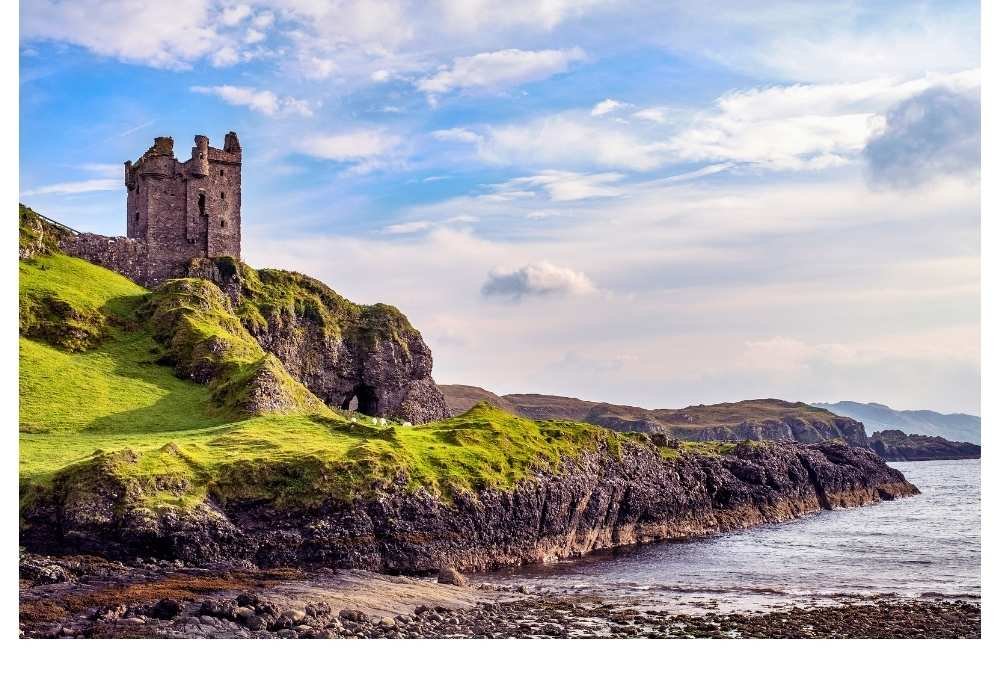
Scotland, often regarded as the land of myths and legends, offers a stunning, untamed beauty for those seeking to build a life away from the world’s hustle and bustle. Its rural areas, especially in the Highlands or on the Isle of Skye, provide the opportunity to live amidst the whispers of history. Imagine waking up to the sound of bagpipes carried on the wind, while the mist rolls over the rolling hills and ancient castles. Scotland’s offer of free land is not just about space; it’s about becoming part of a living landscape, full of history, folklore, and timeless traditions.
A visit to Scotland’s rural areas reveals an entirely different side of the country. Beyond the cities, vast moors, forested glens, and remote islands hold the promise of adventure and solitude. While modern life is just a short distance away, here, in the heart of the Scottish countryside, you are connected with nature in a way few places in the world can match. Scotland’s land offers the perfect backdrop for those seeking to live with intention and create a home steeped in heritage and beauty.
Key Practical Information:
- Best time to visit: Spring (Mar–May) for blooming flowers and wildlife; autumn (Sept–Nov) for the changing colors of the landscape.
- Getting there: Fly into Edinburgh or Glasgow, then take a bus or drive to rural regions. Roads in the Highlands are narrow but well-maintained.
- Duration of visit: A week or two to experience both city life and rural serenity.
- Must-try local experiences: Whisky tasting, exploring ancient castles, hiking Ben Nevis, and enjoying a traditional Scottish breakfast.
- Budget considerations: Accommodation in rural Scotland is affordable, but long-distance travel within the country can be expensive.
- Cultural etiquette tip: Scots are friendly but value personal space. Be polite and respectful of local customs.
- Photography opportunities: Loch Ness, craggy coastlines, ancient castles, and misty mornings in the Highlands.
10. Australia – A Land of Opportunity and Adventure
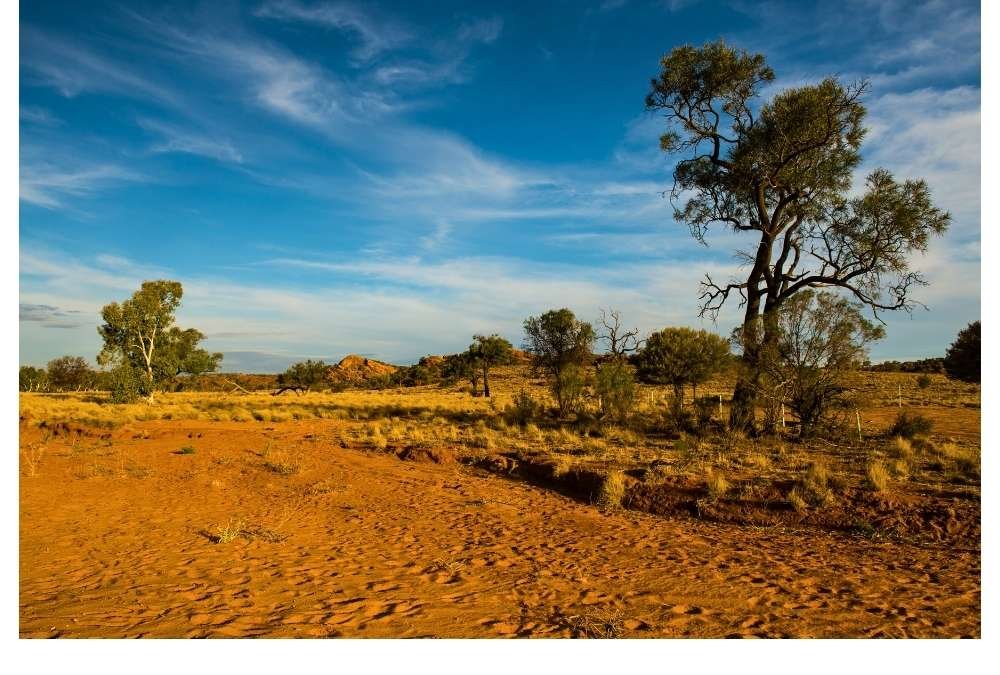
Australia, often revered as a land of endless horizons, diverse ecosystems, and vibrant cities, offers something unique for those who seek both adventure and tranquility. From the vast, sun-soaked deserts of the Outback to the lush, coastal rainforests, the country’s landscapes feel like a natural playground. The offer of free land in certain rural areas invites newcomers to not only explore these captivating surroundings but to build a life in an environment teeming with possibility. In rural Australia, vast, open spaces stretch as far as the eye can see, making it easy to imagine yourself as the custodian of one of these picturesque plots. It’s a country where dreams of owning property and living off the land can come true, especially if you’re ready to adapt to a pace of life that’s far removed from the rush of city living.
One of the most memorable experiences in Australia is seeing the land come to life in ways that are hard to explain. In the morning, you might wake up to a symphony of bird calls from exotic species like the kookaburra, while the sun rises over the Outback’s famous red dirt. Later in the day, a visit to the Great Barrier Reef or a walk along the coastline might reveal a world of unimaginable beauty beneath the turquoise waves. Every corner of the country offers an invitation to connect with nature in profound ways. There’s an unmatched sense of freedom in rural Australia—here, the sky truly feels endless, and the vast landscapes hold an intimate kind of magic.
Key Practical Information:
- Peak Season: December to February (summer)
- Off-Peak Season: April to September (milder, fewer tourists)
- Best Ways to Reach and Explore: Fly into major airports like Sydney, Melbourne, or Brisbane, and then rent a car or take long-distance buses or trains to rural areas.
- Ideal Duration of Visit: 10 days minimum for a thorough experience, more if you plan to explore multiple regions.
- Budget Considerations: While land may be free, transport and accommodation in rural areas can still be expensive. Budget for at least $50–$100/day depending on your activities and accommodation style.
- Cultural Etiquette Tips: Australians value laid-back attitudes and a strong sense of independence. Be sure to respect personal space and local traditions. If visiting rural areas, show respect for the environment and indigenous communities. The Australian sense of humor is often dry, so don’t be surprised if people are a bit sarcastic!
- Photography Opportunities: The sunsets over the Outback are an absolute must-capture moment, as are the dramatic rock formations of places like Uluru. Don’t forget the vibrant wildlife in national parks and the mesmerizing coral reefs beneath the surface. Australia’s vast skies also offer endless opportunities for star-gazing photography, particularly in the more remote, light-pollution-free regions.






